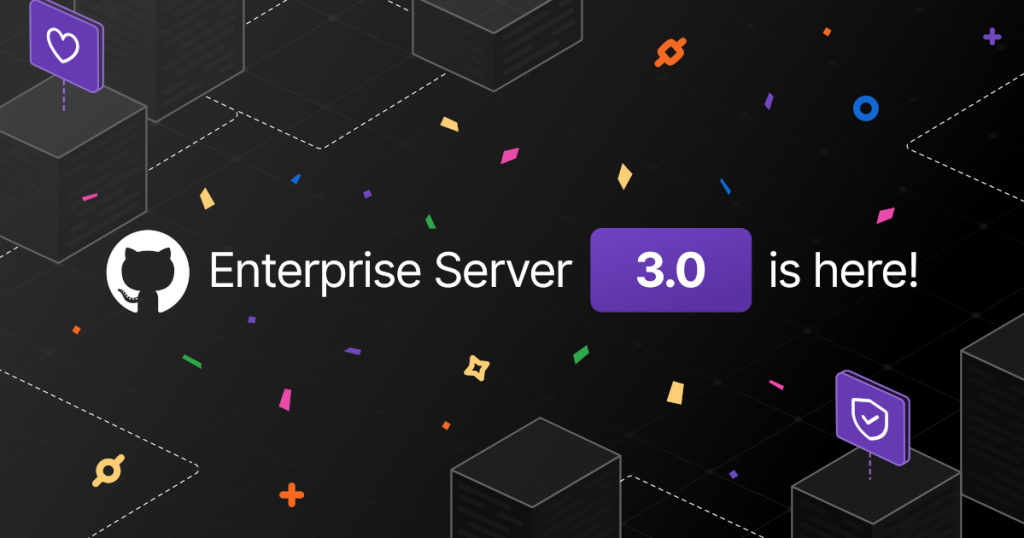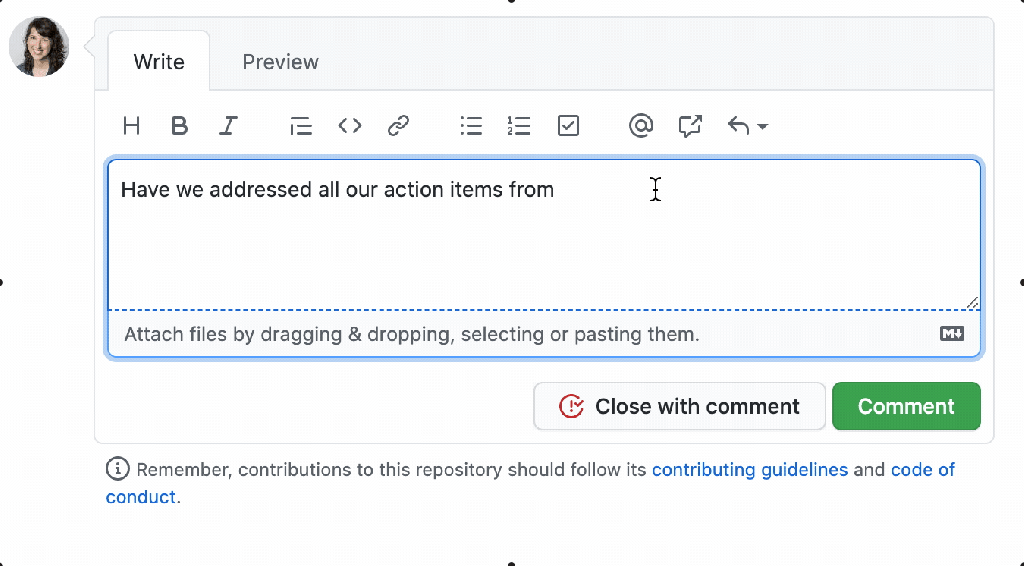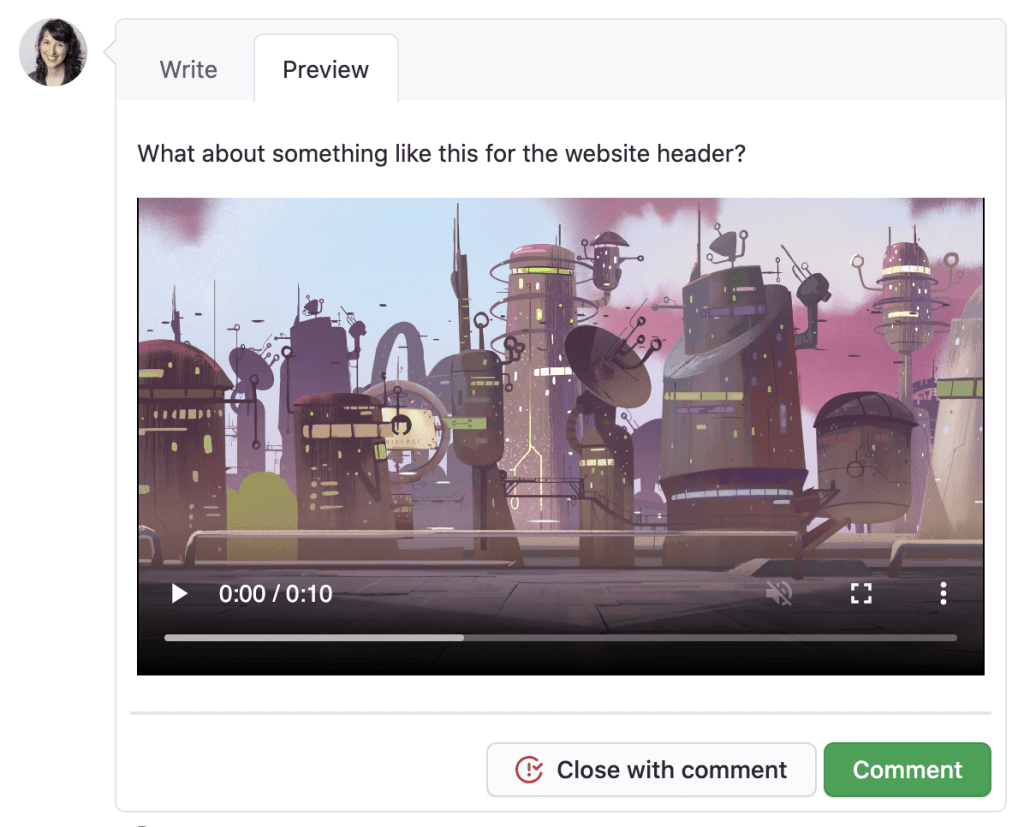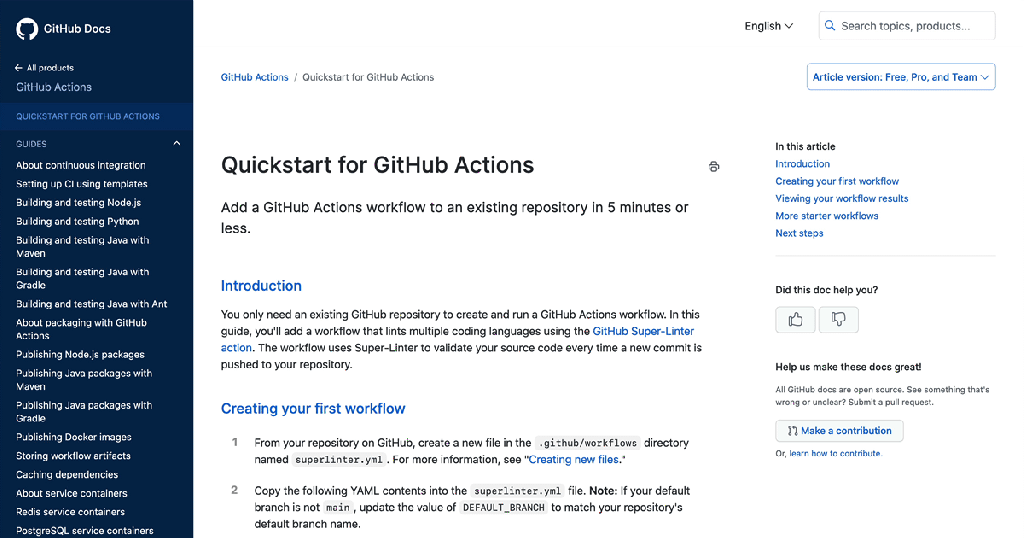Michelle Duke
I'm a Content Producer working in tech & innovation. Known as the “Hackathon Queen” 👑 I'm on the GitHub DevRel team and love sharing stories from our amazing community of developers.
If you haven’t seen it, the GitHub Changelog helps you keep up-to-date with all the latest features and updates to GitHub. We shipped a tonne of changes last year, and…

If you haven’t seen it, the GitHub Changelog helps you keep up-to-date with all the latest features and updates to GitHub. We shipped a tonne of changes last year, and it’s impossible to blog about every feature. In fact, we merged over 90,000 pull requests into the GitHub codebase in the past 12 months!
Here’s a quick recap of the top changes made to GitHub in 2020. We hope these changes are helping you build cooler things better and faster. Let us know what your favourite feature of the past year has been.
While we haven’t exactly been travelling a lot recently, one of the things we love is the flexibility to work wherever we want, however we want. Whether you want to work on your couch, in the terminal, or check your notifications on the go, we’ve shipped some updates for you.
Do you like to work in the command line? In September, we brought GitHub to your terminal. Having GitHub available in the command line reduces the need to switch between applications or various windows and helps simplify a bunch of automation scenarios.
The GitHub CLI allows you to run your entire GitHub workflow directly from the terminal. You can clone a repo, create, view and review PRs, open issues, assign tasks, and so much more. The CLI is available on Windows, iOS, and Linux. Best of all, the GitHub CLI is open source. Download the CLI today, check out the repo, and view the Docs for a full list of the CLI commands.
GitHub CLI 1.0 is here 🎉
Take GitHub to the command line and interact with repositories, issues, pull requests, releases, and more.
✓ Free and open source
✓ Available for macOS, Windows, Linux
✓ GitHub Enterprise Server supportedDownload it now: https://t.co/sWwgXttURj pic.twitter.com/JDTcsumffm
— GitHub (@github) September 17, 2020
It doesn’t stop there. Now you can also have GitHub in your pocket with GitHub for Mobile!
This new native app makes it easy to create, view, and comment on issues, check your notifications, merge a pull request, explore, organise your tasks, and more. One of the most used features of GitHub for Mobile is push notification support. Mobile alerts means you’ll never miss a mention or review again and can help keep your team unblocked.
GitHub for Mobile is available on iOS and Android. Download it today if you’re not already carrying the world’s development platform in your pocket.
Oh and did you know, GitHub for Mobile isn’t just in English? It’s also available in Brazilian Portuguese, Japanese, Simplified Chinese, and Spanish.
Did you know you can have GitHub in your pocket?
Carry the world's development platform wherever you go with GitHub Mobile. Check your notifications over a cup of coffee ☕ or merge pull requests whilst lounging on the couch. pic.twitter.com/yCooFYMZjW
— GitHub (@github) November 13, 2020
With the release of GitHub Enterprise Server 2.21 in 2020, there was a host of amazing new features. There are new features for PRs, a new notification experience, and changes to issues. These are all designed to make it easier to connect, communicate, and collaborate within your organisation.
And now we’ve made Enterprise Server even better with GitHub Enterprise Server 3.0 RC. That means GitHub Actions, Packages, Code Scanning, Mobile Support, and Secret Scanning are now available in your Enterprise Server. This is the biggest release we’ve done of GitHub Enterprise Server in years, and you can install it now with full support.

GitHub Actions was launched at the end of 2019 and is already the most popular CI/CD service on GitHub. Our team has continued adding features and improving ways for you to automate common tasks in your repository. GitHub Actions is so much more than simply CI/CD. Our community has really stepped up to help you automate all the things with over 6,500 open source Actions available in the GitHub Marketplace.
Some of the enhancements to GitHub Actions in 2020 include:
We made it easy for you to see what’s happening with your Actions automation. With Workflow visualisation, you can now see a visual graph of your workflow.

This workflow visualisation allows you to easily view and understand your workflows no matter how complex they are. You can also track the progress of your workflow in real time and easily monitor what’s happening so you can access deployment targets.
On top of workflow visualisation, you can also create workflow templates. This makes it easier to promote best practices and consistency across your organisation. It also cuts down time when using the same or similar workflows. You can even define rules for these templates that work across your repo.
Right at the end of 2019, we announced GitHub Actions supports self-hosted runner groups. It offered developers maximum flexibility and control over their workflows. Last year, we made updates to self-hosted runners, making self-hosted runners shareable across some or all of your GitHub organisations.
In addition, you can separate your runners into groups, and add custom labels to the runners in your groups. Read more about these Enterprise self-hosted runners and groups over on our GitHub Docs.
Last year we added environment protection rules and environment secrets across our CD capabilities in GitHub Actions. This new update ensures there is separation between the concerns of deployment and concerns surrounding development to meet compliance and security requirements.
With Environments, we also added the ability to pause a job that’s trying to deploy to the protected environment and request manual approval before that job continues. This unleashes a whole new raft of continuous deployment workflows, and we are very excited to see how you make use of these new features.
New to Actions: the ability to require manual approvals for Action workflows, making it a full-featured continuous delivery engine. Control the full developer pipeline from commit to deploy. #GitHubUniverse #Keynote https://t.co/9gQRFt3aqQ pic.twitter.com/rgUnKyXhqY
— GitHub (@github) December 8, 2020
Yes there’s all the big updates, and we’re committed to making small improvements too. Alongside other changes, we now have better support for whatever default branch name you choose. We updated all our starter workflows to use a new $default-branch macro.
We also added the ability to re-run all jobs after a successful run, as well as change the retention days for artifacts and logs. Speaking of logs, we updated how the logs are displayed. They are now much easier to read, have better searching, auto-scrolling, clickable URLs, support for more colours, and full screen mode. You can now disable or delete workflow runs in the Actions tab as well as manually trigger Actions runs with the workflow_dispatch trigger.
While having access to all 6,500+ actions in the marketplace helps integrate with different tools, some enterprises want to limit which actions you can invoke to a limited trusted sub-set. You can now fine-tune access to your external actions by limiting control to GitHub-verified authors, and even limit access to specific Actions.
There were so many amazing changes and updates to GitHub Actions that we couldn’t possibly include them all here. Check out the Changelog for all our GitHub Actions updates.
Keeping your code safe and secure is one of the most important things for us at GitHub. That’s why we made a number of improvements to GitHub Advanced Security for 2020.
You can read all about these improvements in the special Security Highlights from 2020. There are new features such as code scanning, secret scanning, Dependabot updates, Dependency review, and NPM advisory information.
If you missed the talk at GitHub Universe on the state of security in the software industry, don’t forget to check it out. Justin Hutchings, the Staff Product Manager for Security, walks through the latest trends in security and all things DevSecOps. It’s definitely worth carving out some time over the weekend to watch this:
GitHub is about building code together. That’s why we’re always making improvements to the way you work with your team and your community.
Issues are important for keeping track of your project, so we have been busy making issues work better and faster on GitHub.
You can now also link issues and PRs via the sidebar, and issues now have list autocompletion. When you’re looking for an issue to reference, you can use multiple words to search for that issue inline.

Sometimes when creating an issue, you might like to add a GIF or short video to demo a bug or new feature. Now you can do it natively by adding an *.mp4 or *.mov into your issue.

Issues are a great place to talk about feature updates and bug fixes, but what about when you want to have an open- ended conversation or have your community help answering common questions?
GitHub Discussions is a place for you and your community to come together and collaborate, chat, or discuss something in a separate space, away from your issues. Discussions allows you to have threaded conversations. You can even convert Issues to Discussions, mark questions as answered, categorise your topics, and pin your Discussions. These features help you provide a welcoming space to new people as well as quick access to the most common discussion points.
Available now, every open source community can try GitHub Discussions in the new public beta. Turn it on in your repo settings and you're ready to go! #GitHubUniverse #Keynote https://t.co/9gQRFt3aqQ pic.twitter.com/cWKCoSgmZ8
— GitHub (@github) December 8, 2020
If you are an admin or maintainer of a public repo you can enable Discussions via repo settings today. Check out our Docs for more info.
Speaking of Docs, did you know we recently published all our documentation as an open source project? Check it out and get involved today.

We launched GitHub Sponsors in 2019, and people have been loving this program. It’s a great way to contribute to open source projects. In 2020, we made GitHub Sponsors available in even more countries. Last year, GitHub Sponsors became available in Mexico, Czech Republic, Malta, and Cyprus.

We also added some other fancy features to GitHub Sponsors. This includes the ability to export a list of your sponsors. You can also set up webhooks for events in your sponsored account and easily keep track of everything that’s happening via your activity feed.
At GitHub Universe, we also announced Sponsors for Companies. This means organisations can now invest in open source projects via their billing arrangement with GitHub. Now is a great time to consider supporting your company’s most critical open source dependencies.
We’re always finding ways to help developers. As Nat said in his GitHub Universe keynote, the thing we care about the most is helping developers build amazing things. That’s why we’re always trying to make it quicker and easier to collaborate on code.
Draft pull requests are a great way to let your team know you are working on a feature. It helps start the conversation about how it should be built without worrying about someone thinking it’s ready to merge into main. We recently made it easy to convert an existing PR into a draft anytime.

Not only can you do multi-line comments, you can now suggest a specific change to multiple lines of code when you’re reviewing a pull request. Simply click and drag and then edit text within the suggestion block.

Alongside the entire Git community, we’ve been trying to make it easier for teams wanting to use more inclusive naming for their default branch. This also gives teams much more flexibility around branch naming. We’ve added first-tier support for renaming branches in the GitHub UI.
This helps take care of retargeting pull requests and updating branch protection rules. Furthermore, it provides instructions to people who have forked or cloned your repo to make it easier for them to update to your new branch names.
We provided re-directs so links to deleted branch names now point to the new default branch. In addition, we updated GitHub Pages to allow it to publish from any branch. We also added a preference so you can set the default branch name for your organization. If you need to stay with ‘master’ for compatibility with your existing tooling and automation, or if you prefer to use a different default branch, such as ‘development,’ you can now set this in a single place.
For new organizations to GitHub, we also updated the default to ‘main’ to reflect the new consensus among the Git community. Existing repos are also not affected by any of these changes. Hopefully we’ve helped make it easier for the people who do want to move away from the old ‘master’ terminology in Git.
In mid 2020, we launched a fresh new look to the GitHub UI. The way repos are shown on the homepage and the overall look and feel of GitHub is super sleek. There’s responsive layout, improved UX in the mobile web experience, and more. We also made lots of small improvements. For example, the way your commits are shown in the pull request timeline has changed. PRs in the past were ordered by author date. Now they’ll show up according to their chronological order in the head branch.

If you’ve been following a lot of our socials, you’ll know we’ve also got a brand new look and feel to GitHub.com. Check out these changes, and we hope it gives you fresh vibes for the future.
Speaking of fresh vibes, you’ve asked for it, and now it’s here! No longer will you be blinded by the light. Now you can go to the dark side with dark mode for the web.
echo "hello, darkness" #GitHubUniverse #Keynote https://t.co/9gQRFt3aqQ pic.twitter.com/HEotvXVJ7R
— GitHub (@github) December 8, 2020
These are just some of the highlights for 2020. We’re all looking forward to bringing you more great updates in 2021.
Keep an eye on the Changelog to stay informed and ensure you don’t miss out on any cool updates. You can also follow our changes with @GHChangelog on Twitter and see what’s coming soon by checking out the GitHub Roadmap. Tweet us your favourite changes for 2020, and tell us what you’re most excited to see in 2021.

We envision the future of AI-enabled tooling to look like near-effortless engineering for sustainability. We call it Continuous Efficiency.

A look at how we rebuilt GitHub Actions’ core architecture and shipped long-requested upgrades to improve performance, workflow flexibility, reliability, and everyday developer experience.

In November, we experienced three incidents that resulted in degraded performance across GitHub services.